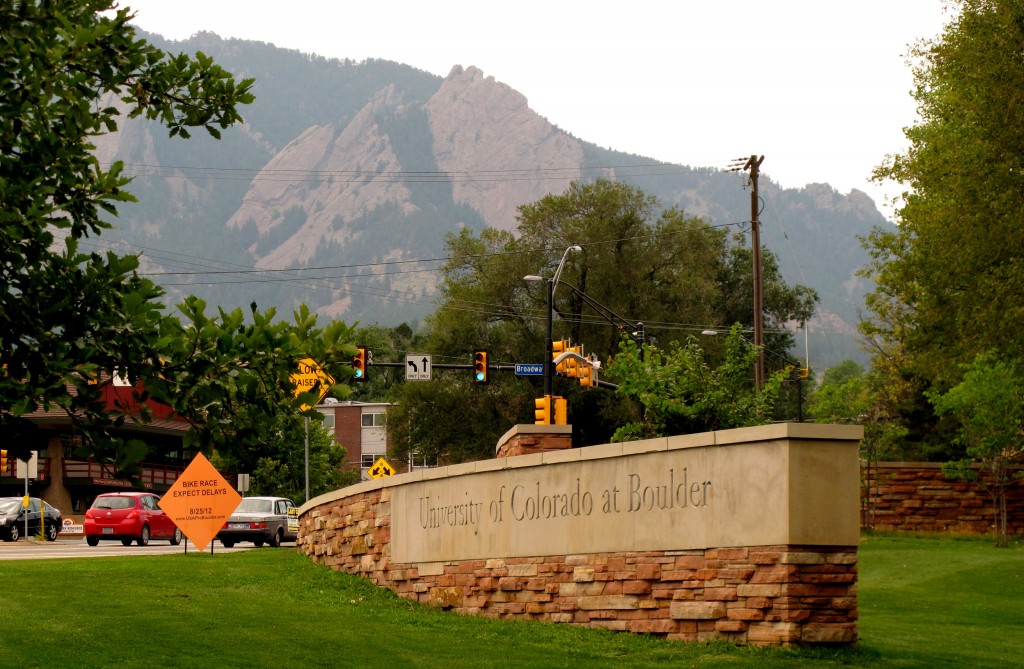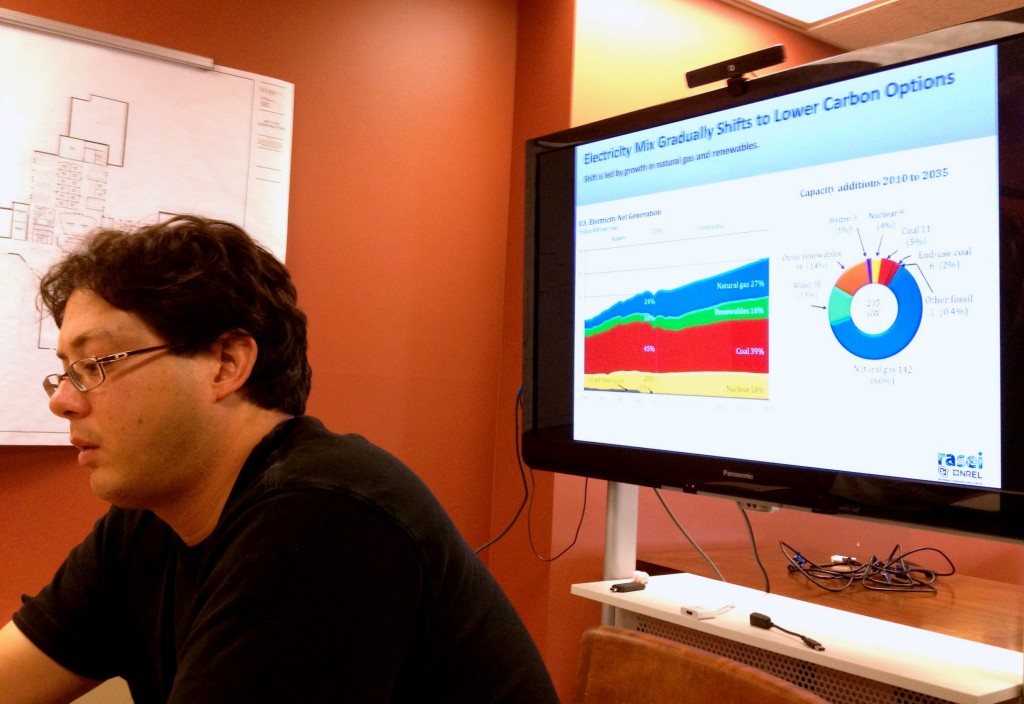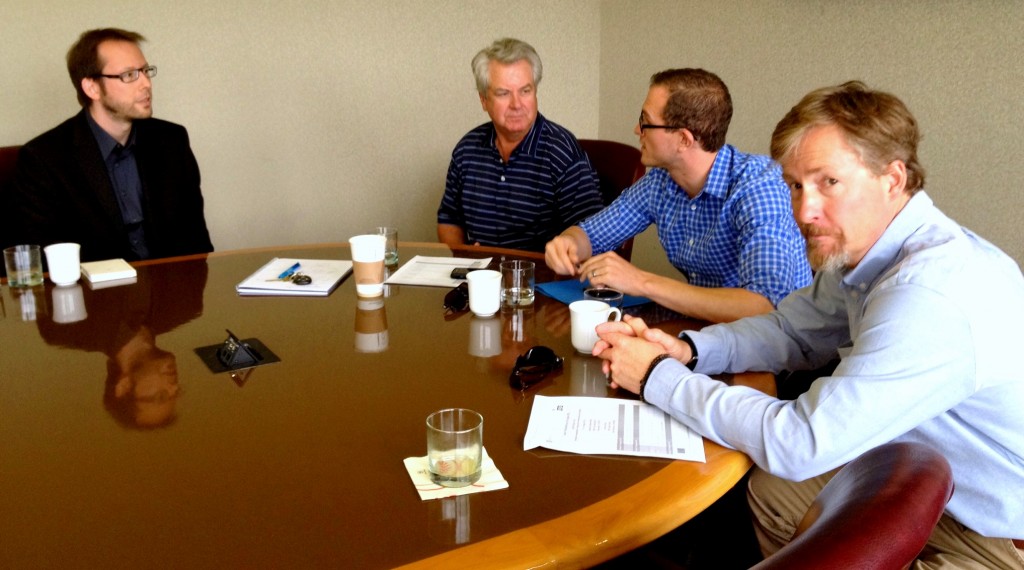EGU’s Science Communications Fellow, Edvard Glücksman, continues to share his thoughts as he takes part in a study tour with other members of the Emerging Leaders in Environmental and Energy Policy Network (ELEEP), a joint project of the Atlantic Council of the United States and the Ecologic Institute. If you have any questions or comments, please contact Ed by email.
In my introductory post I mentioned that Colorado is crucial within the context of the US energy economy as a substantial producer of both conventional fossil fuels and renewable energy. Our two-day whirlwind introduction to the state’s energy sector, by way of meetings with politicians, academics, oil industry representatives, and a site visit to the National Renewable Energy Laboratory, highlighted the wide range of challenges that Colorado faces as it decides how to power its future.
Renewables undoubtedly hold a place in the energy future of both Europe and North America, yet the complexities inherent in their harvest and distribution became all too apparent as we heard from stakeholders with local- and national-level energy implementation experience.
The University of Colorado-Boulder, where ELEEP members met with Professor Kevin Doran (Source: Edvard Glücksman)
The ‘shale gas revolution’
In order to gain a more important foothold in the US market, energy generated from naturally replenished resources, including solar, hydroelectric, geothermal, biomass, or wind, has to be economically competitive with traditional fossil fuel sources. To that end, the discovery of huge domestic reserves of shale gas, natural gas trapped within sedimentary rock formations, whilst helping the United States towards its goal of energy independence, may represent an insurmountable barrier for the growth of renewable energy.
On our visit to the University of Colorado-Boulder, Professor Kevin Doran walked us through the intricacies of this ‘shale gas revolution’ and highlighted some of the issues covered in his recently published review. Whereas the US has an estimated 92 years of gas remaining, Doran is confident that these reserves will expire faster than predicted as a result of growing demand and more efficient extraction technologies. As an example of the latter, he explains how the proliferation of horizontal drilling, where a single well pad can tap into multiple underground gas reserves, extracts “game changing” volumes of natural gas.
Major sources of conventional and renewable energy in Colorado (source: US Energy Information Administration)
The newfound abundance of natural gas has lowered its price below that of coal and is opening the market for what Doran calls a “full-throttle shift to a gas-dominated electricity system”. On the one hand, a transition from coal to gas would make for cleaner, cheaper, more flexible, and more efficient electricity across the US. When used as a fuel, natural gas emits roughly half the greenhouse gas emissions of coal. However, Doran is weary of the long-term consequences of an all-out reliance on gas, not least that its price is sure to rise as national reserves are tapped.
Furthermore, the extraction of shale gas can have severe detrimental environmental consequences because of the environmental impact of the process of fracking, or hydraulic fracturing, a method that uses high-pressure water and materials such as sand and chemicals to break open cracks in rock deep underground. Fracking is controversial because, whereas it increases the accessibility of vast sources of natural gas and petroleum, it may contaminate ground and drinking water supplies, decrease air quality, and destroy or fragment natural wildlife habitats. The oil and gas industry, represented at one of our meetings by Tisha Conoly Shuller, President of the Colorado Oil and Gas Association, seems less concerned about what she calls the “bar fracking nonsense”, citing a general fear of fracking amongst local communities based on misinformation, something Shuller hopes to eliminate by holding public outreach meetings.
In a slightly more reserved tone, another representative of a gas extraction company admitted to shortcomings in the past but claims her company is becoming increasingly aware and more responsible for the chemicals it uses during the fracking process.
In Europe, fracking is banned in France and Bulgaria and is only carried out in very limited test wells elsewhere. A true test of whether fracking will be more readily adopted in Europe is in Poland, holder of vast shale gas reserves that may hold the answer to its struggle for energy independence.
Adjusting to the market
The US therefore faces a crucial dilemma: to follow the short-term market and fully invest in natural gas or to proceed with caution, moving forward with natural gas at the same time as committing to a healthy investment in the more long-term, sustainable renewable energy sector.
Alas, whereas renewables offer the greener solution, their proliferation in the US remains dependent on the market, including their promotion through government subsidies. A good example of this dynamic is the current debate surrounding the renewal of federal production tax credits for wind power, now the second most economically competitive source of renewable energy behind hydropower. The current wind-power tax credit system is set to expire at the end of this year and, whereas Mitt Romney would rather leave the survival of wind to the market, President Obama is keen to renew the subsidies.
The prospect of expiring wind-power tax credits is already influencing the market in Colorado, with Vestas Wind Systems, the world’s biggest wind turbine maker, cutting jobs in anticipation of what it predicts will be a decline in business next year. Interestingly, this move was questioned by Paul Weissman, chief of staff for the state House Democrats, whom we met over lunch at a restaurant he owns as a side project to his political career. Weissman claims that Vestas are scaling down to mitigate their own development mistakes, having built themselves up too fast in Colorado whilst simultaneously failing to build enough transmission lines to move the resulting energy.
The construction of adequate transmission lines remains a fundamental challenge for the development of renewables across Colorado, where energy may be abundant yet geographically isolated from consumers in the most energy-intensive areas. Bill Midcap, of the Rocky Mountain Farmers Union, was quick to mention solar power as a particularly grid-reliant energy source. He explained that, whereas three counties in Central Colorado see more annual sunlight than all of Germany, delivering the power to customers further away is a major challenge in the face of protests from residents hesitant to let power lines run through their community. Midcap suggests a strategy of compromise, where compliant communities would receive discounted energy.
Energy independence
Our meetings gave us a glimpse of the complexities inherent in predicting Colorado’s energy future. Whereas it is clear that shale gas is sure to feature prominently, so too are renewables in a state rich in natural energy sources. Their adoption depends on the local equivalent of what seems to be a wider goal; namely, to achieve energy independence in a sustainable and profitable manner. Whereas Colorado could make every effort to take a green path, it could also resort to the short-term cheaper option of shale gas or, even more destructively, begin to tap into the vast deposits of oil shale locked into rock throughout the western part of the state.
As Michael Whiting, an independent County Commissioner from the Southern Colorado town of Pagosa Springs, explains, some of the most beautiful parts of the state are often sitting on the best energy and water resources. The energy future of Colorado therefore depends on the ability of its entire population to compromise, from local communities up to Governor John Hickenlooper, a former oil and gas industry geologist, in order to ensure they can light up their homes whilst at the same time preserving the state’s stunning landscape.
By Edvard Glücksman






Pingback: GeoLog | Transformation of the Energy Economy: The US experience – Part V, California’s State Capitol